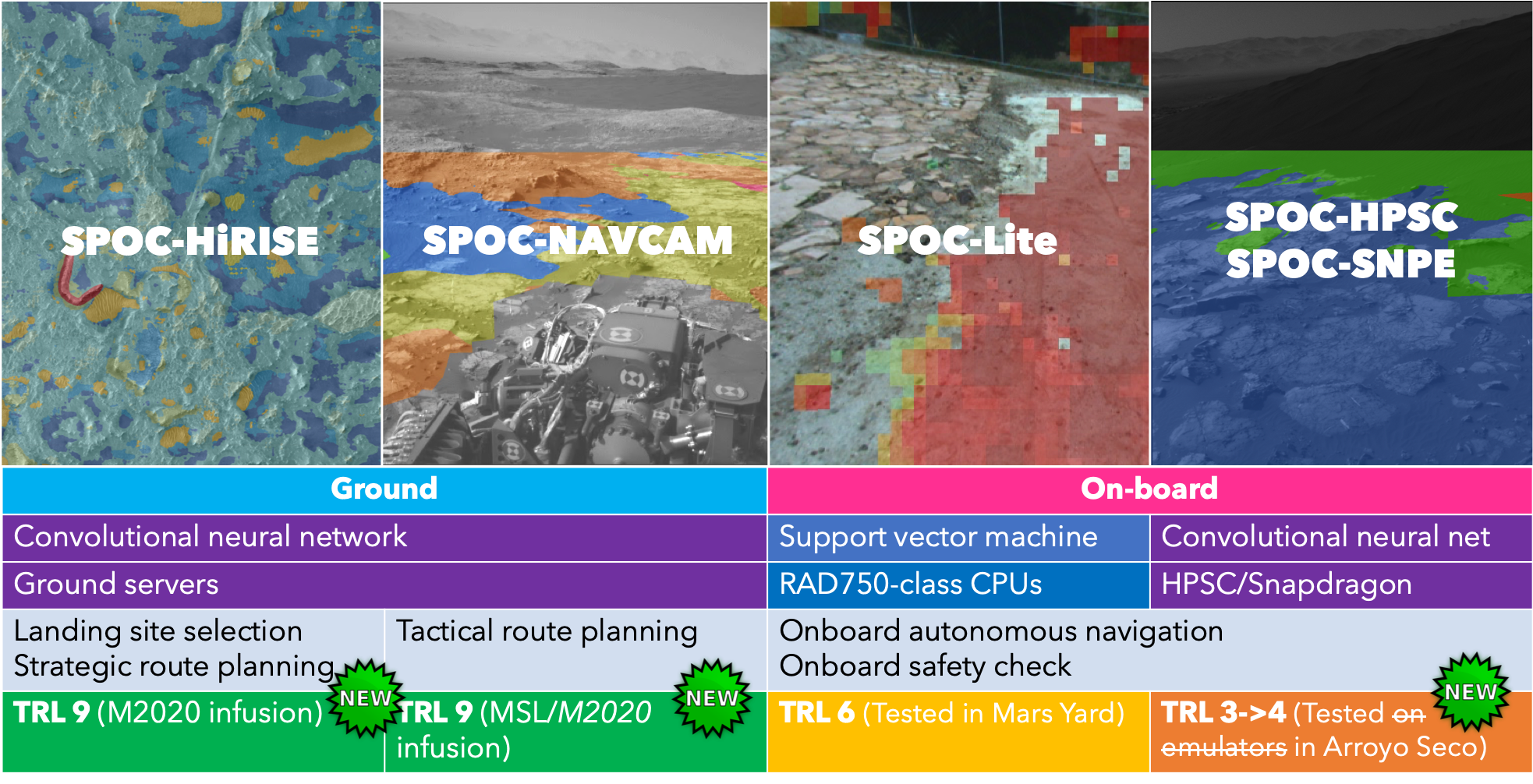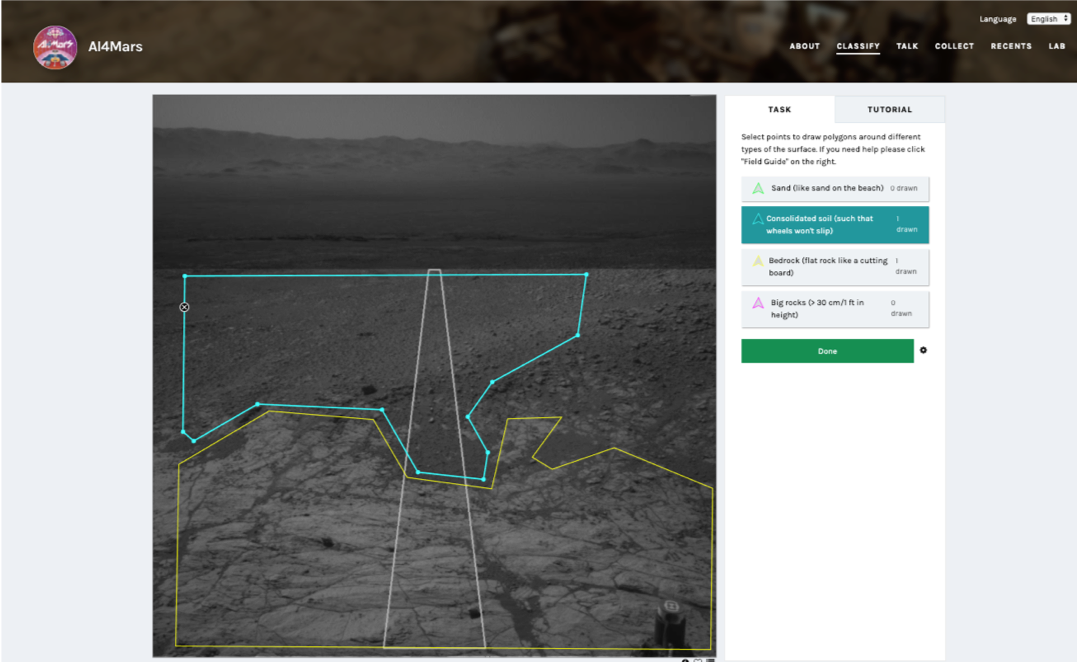SPOC
A Deep Learning-based Terrain Classifier for Mars Rovers

U.S. Government sponsorship acknowledged.
A Deep Learning-based Terrain Classifier for Mars Rovers




"Drones, and autonomous robots more generally, need to be able to understand the environment around them. Deep learning and semantic segmentation are key tools that make this happen, and my work on SPOC with these technologies helped lay the foundation for the projects I'm working on today."
"The team's work at NASA JPL focused on Martian terrain, but machine learning is at the core of autonomous driving here on Earth, too. My SPOC experience gave me the fundamentals of non-deterministic outcomes, model training, and system testing that apply to my role at Waymo, where I analyze fault protection architectures and system testing."
"Planning optimal paths that avoid obstacles is critical for mobile robots, whether they’re on Mars or in a Galaxy Far, Far Away. Working on SPOC taught me that deep learning can be used even in highly constrained real-world applications. It has become a core part of my work at Disney."
"Machine Learning has the tremendous capability of bridging the gap between the macroscopic and the microscopic world. The lessons learned from SPOC still inspire our work on cancer segmentation and detection on microscope slides in pathology."